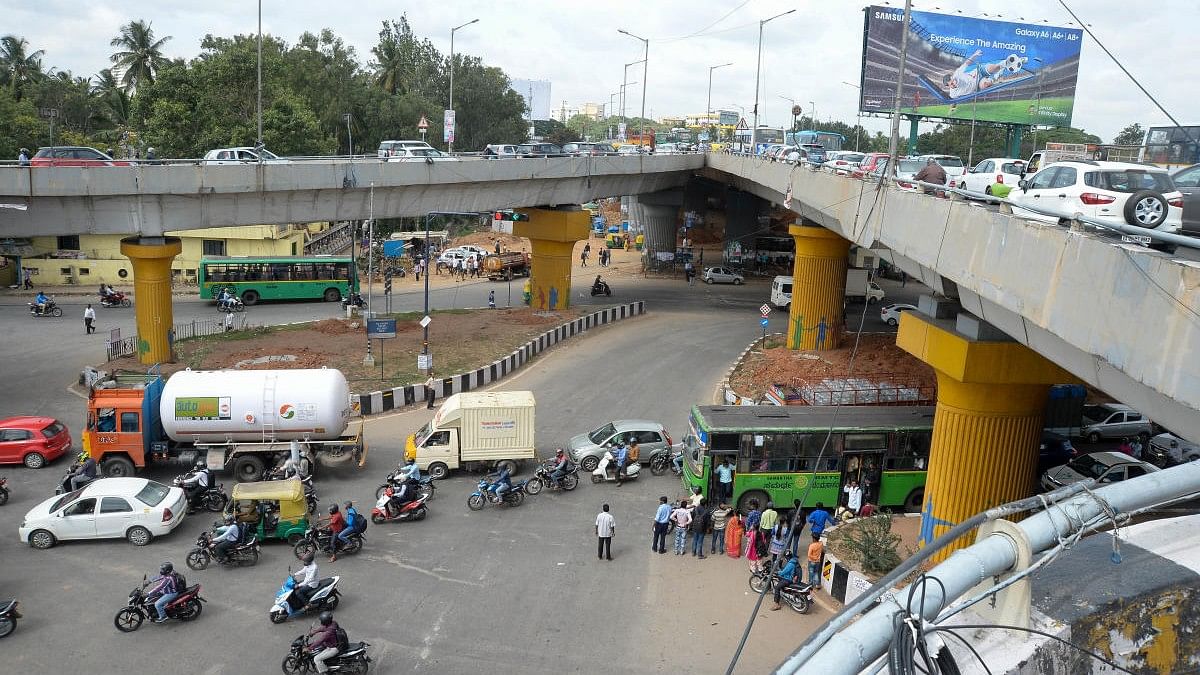
DH File Photo
Alok Kumar, Additional Director General of Police (Traffic and Road Safety), Karnataka has helmed the task of planning and managing the flow of traffic along with road safety across the state. In an interview with DH’s
Udbhavi Balakrishna, Kumar shares his biggest concerns about traffic and road safety, ongoing efforts, and the upcoming plans to improve road safety in Karnataka.
What are the most pressing traffic and road safety concerns across the state?
In major cities, managing the flow of traffic is a big challenge because there is a high density of traffic and limited infrastructure that cannot be expanded proportionately to match the growth of vehicles and road users. In terms of road safety, the quality of roads or road networks is improving, so the tendency of drivers to cover a distance in a shorter time is increasing — this is leading to an increase in road accidents and deaths. Last year, we lost an average of 34 people every day in Karnataka! This year, I have a feeling that there will be a marginal decline, since we are making efforts to see a decline in deaths. But that is not enough.
What agencies do you work with to tackle these concerns? What happens if there are any issues?
We work in collaboration with the National Highways Authority of India (NHAI), the Public Works Department, the Karnataka Road Development Corporation, the Zilla Panchayat, and other agencies maintaining the roads. We have been impressing upon these officers to take up work as soon as possible to resolve accident blackspots — both short-term and long-term — by using thermoplastic paint, rumbler strips, cat’s eye, or constructing foot over bridges, and underpasses. If we have found that no work was taken up despite our multiple requests and accidents have continued at the blackspots, we have taken action against the concerned contractor, engineer and, in some cases, the project directors, for contributory negligence. But this is an extreme measure.
How integral is technology in your goal to make roads safer and reduce traffic violations?
AI-based cameras can instil some fear in road users and lead to some deterrence, but they are not effective without enforcement. Technology can only be an assistance; it can only supplement our efforts by capturing violations, not the violator. Human intervention remains indispensable in India because the road user’s mindset has not changed. Traffic fine pendency is huge in Karnataka — 93% of road users with traffic violations have not paid their fines. We need to enforce our rules better; at least 10% of police enforcement should be real-time, otherwise technology loses its teeth.
Accident deaths on the Bengaluru-Mysuru highway came down from 100 in January-May 2023 to 31 in January-May 2024. What has worked there?
Prohibiting two-wheelers, three-wheelers, tractors, carts, and similar types of vehicles from accessing it has reduced the number of accidents because two-wheelers previously comprised the highest casualties on the highway. Cameras and social media have helped in deterrence; the police held awareness drives, distributed pamphlets, and made announcements at toll gates. At least 17 FIRs were filed in the third week of June by the Mandya SP against drivers driving on the wrong side, and the police are writing to the regional transport offices to get the violators’ driving licenses suspended. However, about 200-300 vehicles go beyond the speed limit on the highway daily. For example, from June 1 to June 15,72,822 traffic violations were recorded on the highway, many of which were for driving above the speed limit. This is why we want to bring in the ‘sectional overspeeding’ system. It is being fine-tuned now so that people cannot hoodwink the existing cameras by slowing down near them.
Road networks are increasing, and highways are getting better. What can be improved to ensure drivers comply with the motor vehicle rules?
There is no denying that the standards of highways and other roads are improving. But my suggestion is that road safety should form a part of the overall package of highway construction, not added as an appendage at a later stage. A road safety audit must be conducted in collaboration with the local administration before the road is opened to the public. Another thing is that there can be an amendment in the motor vehicle rules that if people don’t comply and are not paying their fines over a certain time, there should be a provision that allows the police to impound vehicles with repeated violations registered against them. But this is a policy matter; our elected representatives should take a call.
What are your biggest focus areas going forward?
For me, reducing the number of deaths is the prime objective. Second is sugama sanchara — the smooth flow of traffic. Wherever there are three or more fatal accidents in a day, I check with the officers and assist. I also want to educate the public. That’s why I engage with them on social media and post about accidents, especially due to overspeeding. It should stick in the minds of road users that they could also be victim in a road accident; this might make them more cautious.